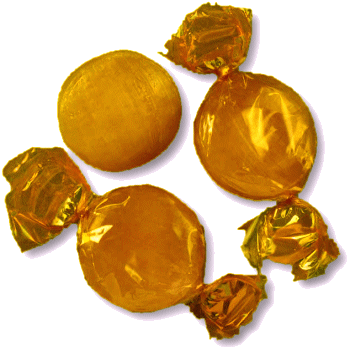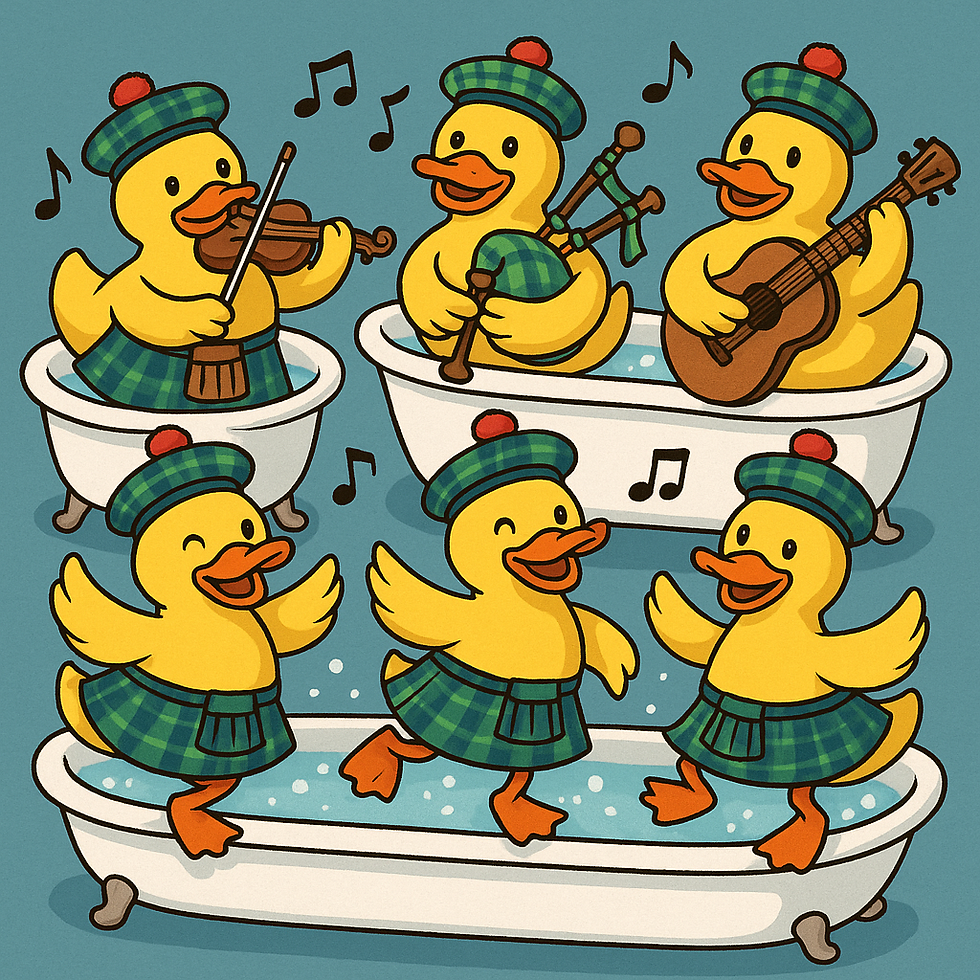




WELCOME TO AN ENTERTAINMENT SITE FOR SCOTTISH COUNTRY DANCERS!
Enjoy this curated selection of theme-related dances for celebrations and holidays, or find a dance associated with a special calendar day, or EVEN your own birthday!
Jun 14

Archimedes' Bath Day
Duckies in the Bath
Other Scottish Country Dances for this Day
Today's Musings, History & Folklore
"🎶 Oh, Rubber Duckie, you're the one
You make bath time lots of fun
Rubber Duckie, I'm awfully fond of you
Bo bo bo de oh"
~ "Rubber Duckie", Sesame Street, 1970
On this day, back in the 3rd century BCE, the brilliant Greek mathematician and inventor Archimedes is said to have made a groundbreaking discovery while enjoying a simple bath. As he lowered himself into the water, he realized that the volume of an object could be determined by the amount of water it displaced—a revelation so exhilarating that he reportedly leapt from his tub and ran naked through the streets of Syracuse, shouting, “Eureka! Eureka!”
Centuries later, this same principle is reenacted in bathrooms around the world, thanks to a humble toy introduced in the 1940s: the rubber duck. Beloved by children and adults alike, these cheerful yellow companions have bobbed their way into the cultural imagination, even inspiring rubber duck races held internationally to raise funds for charity.
Duckies bobbing and weaving in the bath are illustrated by petronellas and even a modified weasel reel in this 3 couple strathspey! Long casts 'round the bathtub and an allemande finish up your dancing ablutions!
The current rubber duck trend, also known as "Jeep ducking" or "Duck Duck Jeep," involves leaving small rubber ducks on Jeeps as a gesture of kindness and camaraderie among Jeep owners.
The trend originated in 2020 during the early days of the COVID-19 pandemic when Allison Parliament, a Canadian resident of Alabama, placed a rubber duck on a Jeep in a store parking lot with a note saying "nice Jeep" as an act of kindness.
This simple act of kindness gained popularity after Parliament shared it on social media, and it quickly spread across the country and internationally.
So whether a yellow duck accompanies you on your journey to a dance or after a long evening of dancing, in a warm bath while you review your crib sheets, enjoy! 💛 💛 💛 🦆 🦆 🦆 🛀 🛀 🛀
Duckies in the Bath
June 14 celebrates the day the ancient Greek scholar Archimedes jumped out of his bathtub shouting, "Eureka, Eureka!" ("I have found it!") in the 3rd century BCE.
Legend has it that on this day Greek mathematician, scientist and scholar, Archimedes, discovered while taking a bath that an object’s volume could be accurately measured by its displacement of water. Unable to contain his excitement, Archimedes leapt out of the bathtub and yelled, “Eureka, Eureka!” as he ran through the streets of Syracuse, Greece.
Archimedes' insight led to the solution of a problem posed by Hiero of Syracuse - how to assess the purity of an irregular golden votive crown. Suspecting his goldsmith of cheating by removing gold and adding the same weight of silver for his crown, there was no easy way to determine the purity. Although equipment for weighing objects with a fair amount of precision existed, Archimedes' discovery allowed the measurement of volume, the ratio of which would give the object's density, an important indicator of purity (as gold is nearly twice as dense as silver and has significantly greater weight for the same volume).
Rubber ducks as a bath time plaything were created by sculptor Peter Ganine in the 1940s. Rubber duck races, also known as derby duck races, have been used as a method of fundraising for organizations worldwide. There are hundreds of races held in the USA and internationally.
The World’s Largest Rubber Duck, designed by Dutch artist Florentijn Hofman, was created in 2007 to inspire locals and tourists to explore and enjoy waterfront festivals around the world. Several ducks have been created of various sizes and tour the world's waterfronts.
For the North American schedule of one touring duck, click the 61 ft duck on its stop in Buffalo, New York in 2016.
Click the dance cribs or description below to link to a printable version of the dance!






